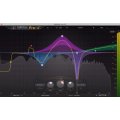
If you've ever wanted to be able to stream your pod.
Audio hijack pro setting for podcast how to#
If you connect an audio interface that has higher quality microphone and speakers plugged in, you would need to set the Input and Output to that interface to get the input and out put the be the microphone and speakers, respectively. A tutorial for how to set up a livestream for your podcast or music dj using Audio Hijack and Shoutcheap. 2) Select Audio Device in the first popup menu of the Input tab. I downloaded the trial version and will check it out. It sure does seem a lot simpler than what I’m doing.
Audio hijack pro setting for podcast pro#
Basic Set Up 1) Launch Audio Hijack Pro and create a new session. I ran across a reference to this post in the Rogue Amoeba blog that describes how to use Audio Hijack Pro to podcast in a number of scenarios. The setup for this is as basic as the show itself. The Input is, by default, your computer microphone, and the Output is the speakers. The Most Basic Podcast: A Man And His Mic The most basic podcast consists of one host talking, with nothing else. The first thing that you must have to set up a podcasting studio in your home is a computer.

Step 1: Selecting Your Podcasting Computer. Following a few simple steps will make your podcast stand out as professional and polished. What does Loopback do? Think about your computer's audio settings. The last thing you want is for the quality of your audio to detract from the quality of your content. Rogue Amoeba also makes an excellent utility called Loopback. I have written about Audio Hijack here before, their app that allows you to record audio from other applications (and that's just the start of all the powerful things it can do).

So what do you do? Rogue Amoeba makes excellent Mac apps that, for lack of better explanation, hack into the audio system of your Mac. And in some cases, it creates issues with echo, delay, or a nasty feedback loop. book by bringing readers through a tour of AH, setting up a recording session. But it isn't going to produce a pure representation of the audio I am trying to send. Its been three years for the podcast and I still use Audio Hijack Pro. Sure, you can play it right on your computer and let the audio from your speakers go straight back into the microphone input of your computer. Have you been teaching a class in Google Meet or Zoom and wanted to play a song from iTunes for your digital classroom? Or perhaps a YouTube video or any other application with audio?


 0 kommentar(er)
0 kommentar(er)
